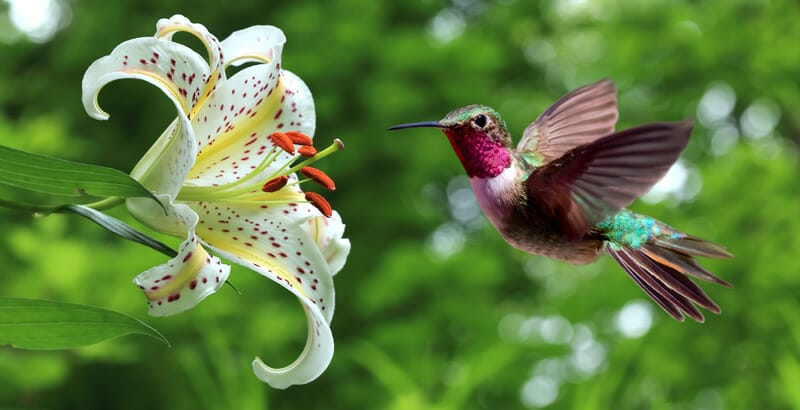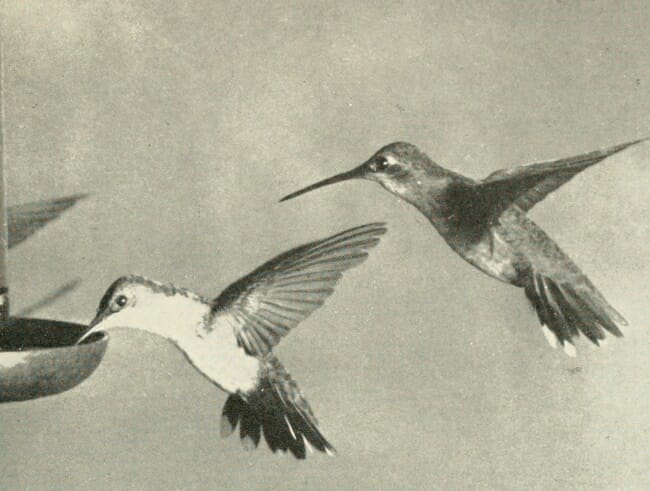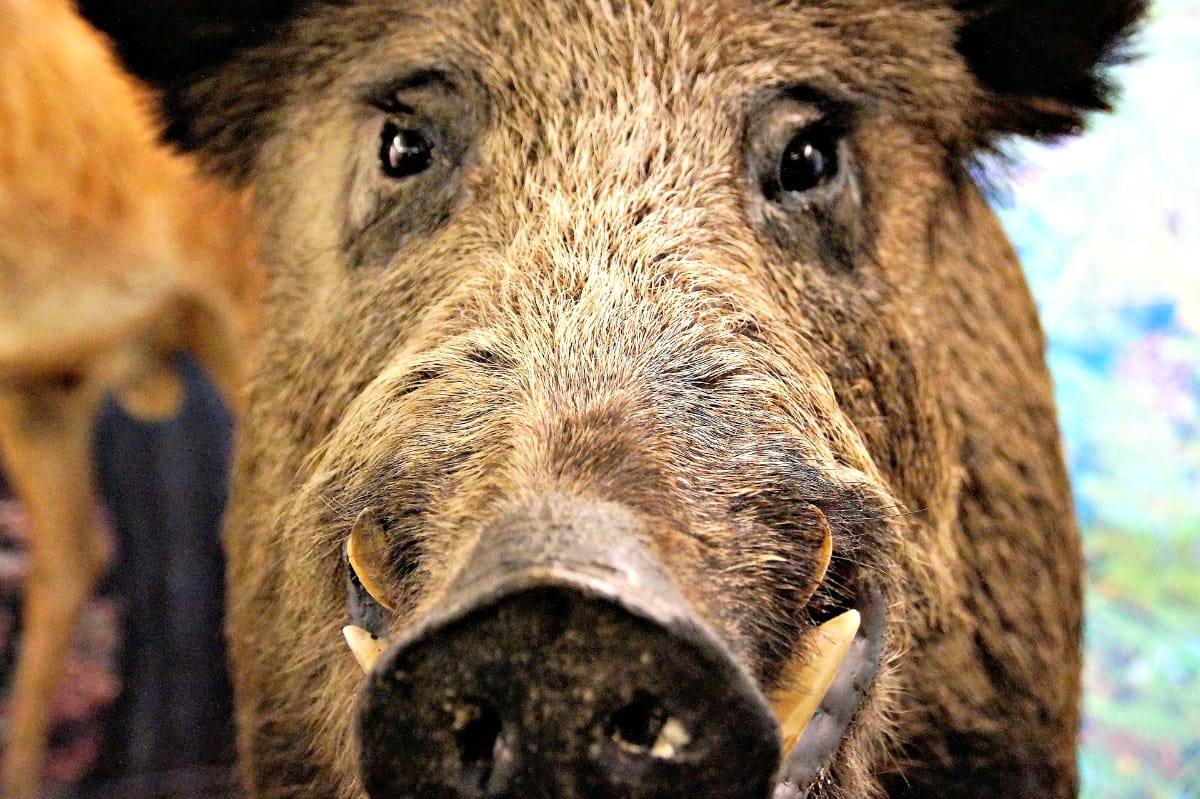

Uh oh...
It appears that you're using a severely outdated version of Safari on Windows. Many features won't work correctly, and functionality can't be guaranteed. Please try viewing this website in Edge, Mozilla, Chrome, or another modern browser. Sorry for any inconvenience this may have caused!
Read More about this safari issue.

A flash of color outside your window, or while you’re in the backyard, is usually the only way a hummingbird announces its presence. Hummingbirds have a way of brightening anyone’s day if you’re lucky enough to catch a glimpse of one. Summer is the perfect time to spot hummingbirds in Arkansas, and there are ways to attract these tiny but vibrant visitors.
Arkansas is home to mainly one species of hummingbird, although others have been spotted in the state. The most common is the Ruby-throated Hummingbird. It is easily recognizable by its green feathers with a white underbelly, and males have a patch of red across the throat. Ruby-throated hummingbirds are common across the Eastern half of the United States. They measure a mere 3 to 4 inches, and their wings beat 55 to 75 times per minute. This creates the hum you might hear if you’re close enough and gives the bird its name. Their rapid wings and flexible shoulder bones allow the birds to hover in place, as long as they need to drink nectar from a flower or feeder.

Ruby-throated Hummingbirds migrate during winter months to warmer places, especially Mexico and Central America, although some have been spotted wintering in Florida and Louisiana. The birds return in the spring, flying up to 500 miles from their preferred nesting grounds. By April, you’re likely to start seeing the visitors hovering outside windows, looking for feeders and flowers. They also build small nests in shrubs and trees and camouflage them well. Females typically lay two eggs and brood for 14 to 16 days before the eggs hatch. The birds take about three weeks to raise their young. A female can lay more than one brood during the season this way. Females raise their young alone since the males only interact with the females to mate.
Ruby-throated hummingbirds can be spotted across Arkansas. They spend the spring and summer here because of the abundant food sources. They’re famous for drinking nectar from flowers and feeders, however, they also need protein sources. The birds eat small insects and their eggs, spiders and larvae. They also occasionally sip tree sap from woodpecker-drilled holes if nectar is scarce. They do not eat pollen like bees do, although they can get pollen on their beaks when drinking nectar.

Hummingbird Feeders
Although hummingbirds are capable of getting all of their nutritional needs from nature, hummingbird feeders became popular in the 1950s. Their origin can be traced back to naturalist and wildlife photographer and filmmaker Margaret L. Bodine. In her work, Bodine created glass-filled bowls of sugar water disguised as flowers to attract hummingbirds and photograph them. One of her articles, “Holiday with Hummingbirds,” ran in National Geographic in 1928.
May Rogers Webster, a naturalist in New Hampshire known for taming hummingbirds and creating environmental education programs, read Bodine’s article and was fascinated by the idea of the feeders. Her husband, Laurence Webster, designed a feeder made from glass using his engineering background. He had the feeders produced at the lab at M.I.T., his alma mater.

The Websters originally produced about 30 blown glass feeders and placed them around their gardens on their large estate in Cambridge, Massachusetts, and their summer retreat in New Hampshire. They also allowed the public to spend some afternoons in the gardens, and the hummingbird feeders quickly became a favorite attraction. In 1947, National Geographic ran another article about hummingbirds by writer and photographer Harold Edgerton. His photos of hummingbirds at the Websters’ feeders were a hit, and people quickly began inquiring where they could buy the feeders. Webster produced some feeders and sold them for $10.00 each, and he also donated some to the Audubon Society. Eventually, the feeder was reproduced for commercial sale and became a popular way to attract hummingbirds to backyard gardens.

Common Hummingbird Feeder Practices
Today anyone can keep a hummingbird feeder in their yard as an easy way to view the beautiful birds. There are some recommended best practices for feeders. First, hummingbirds are attracted to red, but you don’t want to use a red (dyed) solution. Instead, opt for a red feeder. The best hummingbird solution is four parts water to one part sugar. In a pan, boil tap water and add the sugar. Let it cool completely before putting the solution into your feeder. Any extra solution can be stored in the refrigerator. It should only take two to three days for the hummingbirds to find and empty the feeder. Once it’s empty, clean it with hot tap water. You can also use a light vinegar solution but do not use dish soap. This could leave harmful residue inside the feeder.
You can also attract hummingbirds by planting flowers the birds love in your garden. Arkansas falls into growing zones six to eight, which is important to know when choosing your flowers. Zinnias and Bee Balm are two easy choices. They are bright flowers that grow well in full sun. Salvia and Cardinal Flower have long stalks perfect for hummingbirds’ slender beaks. Trumpet flowers are climbing flowers whose shape offers an easy way for hummingbirds to reach the nectar, and columbines are also attractive to the birds. Find a full list of plants hummingbirds love from the Old Farmer’s Almanac, or check with your local gardening center.
If you want to learn more about birds and birding in Arkansas, a great place to start is the Arkansas Audubon Society. The Arkansas Audubon Society keeps a list of all birds spotted in the state, and you can even report rare bird sightings, which is helpful to understand bird migration and behavioral changes. So although the Ruby-throated Hummingbird is the most common in the state, the society lists 11 types of hummingbirds that have been sighted in the state, and six of these are rare, meaning they’ve been seen less than ten times. However, the Rufous Hummingbird, Anna’s Hummingbird and the Black-chinned Hummingbird have all been sighted more often. These three species typically inhabit more western states, but it’s more common to see them in Arkansas over the winter if the birds have chosen to migrate east instead of south.
This summer and fall, watch for the quick movements and bright flashes of hummingbirds in your garden or around your hummingbird feeder and don’t forget to regularly clean and refill the feeder. No matter where you are in Arkansas, you’ll soon have tiny visitors whose quick wings and vibrant colors are a wonder to observe.
Click here to learn more about Arkansas backyard birds.

We do the work.
You check your email.
Sign up for our weekly e-news.
Get stories sent straight to your inbox!












 Leave a Reply
Leave a Reply
[…] some of Arkansas’s most common birds are the American crow, ruby-throated hummingbird, yellow-billed cuckoo, broad-winged hawk, great horned owl, blue jay, American robin, eastern […]
[…] les stars des oiseaux migrateurs sont les colibris. Attirés par les nectars de fleurs, ils s’arrêtent chez nous avant d’aller passer l’hiver au Mexique (mais ils ont tout compris ces colibris). […]